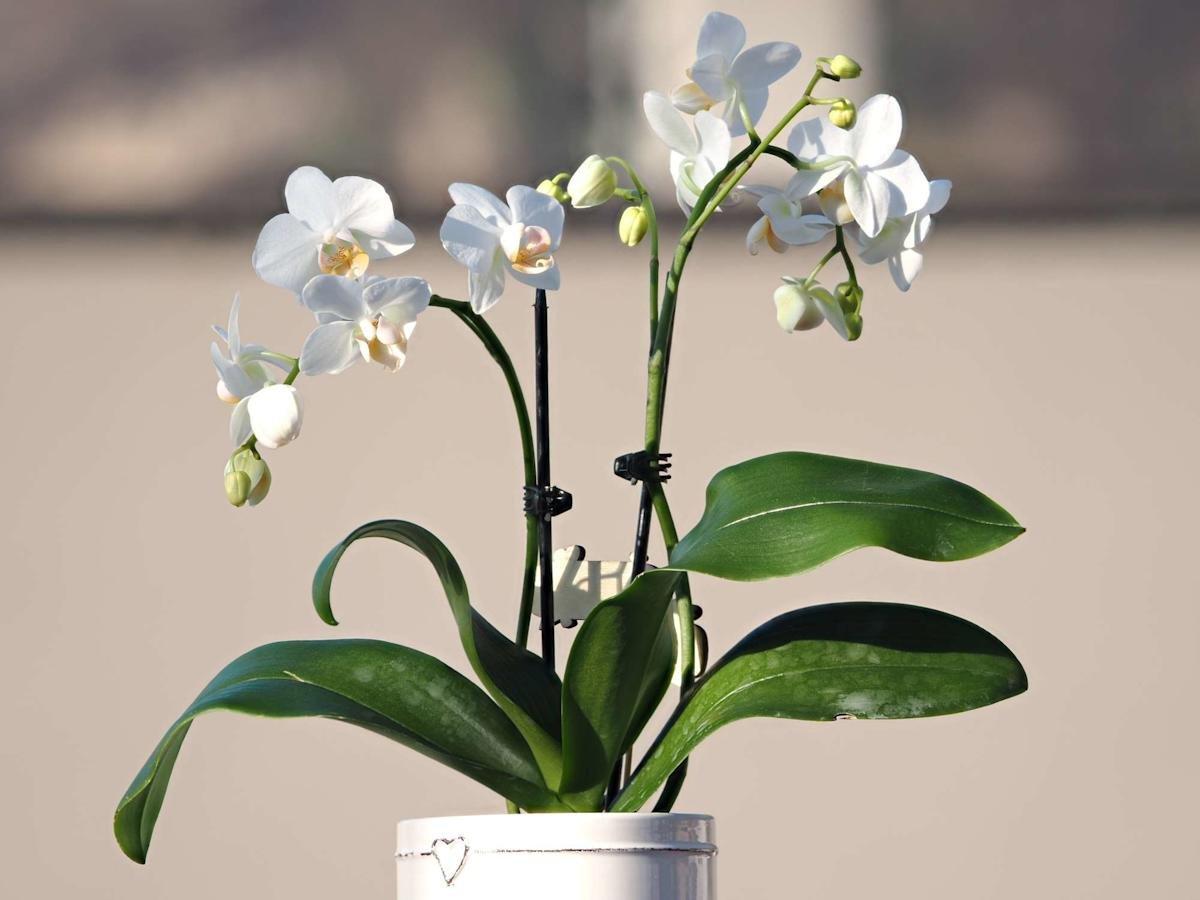The primary reason orchid leaves split is irregular watering.
If the air in your home lacks moisture, using a plant humidifier can prevent orchid leaves from splitting.
Sterile plant or medical glue can be used to mend split orchid leaves.
Orchids, with their exotic appearance, remain a favorite among houseplant lovers. While their stunning flowers often captivate growers, their leaves also add charm when the plant isn’t in bloom. If you’re new to orchids and notice splits in their leaves, don’t worry. Though it may look unattractive, it doesn’t always mean your orchid is unhealthy or dying.
Continue reading to discover the causes behind orchid leaf splitting, when it’s a serious issue, how to prevent it, and whether splits can be repaired.
1. Irregular Watering Habits Leading to Orchid Leaf Splitting
Though orchids prefer slightly dry conditions over excessive moisture, inconsistent watering can cause leaves to split along the central vein (the leaf’s weakest section).
Watering too heavily after a long dry spell can cause a sudden rush of water, splitting leaves that have become wrinkled and leathery due to dehydration.
How to Resolve the Issue
The best approach is to water orchids only when their moss or growing medium is completely dry (but not left dry for too long), then moisten the medium thoroughly without oversaturating it.
To help an orchid with wrinkled leaves recover, place the plant in a water tray and let it absorb moisture through its roots for about 20 minutes. Avoid leaving it in standing water longer, as this can cause root rot.
Want more gardening advice? Subscribe to our free gardening newsletter for expert tips, troubleshooting tricks, and more!
2. Physical Damage and Trauma Causing Orchid Leaves to Split

Splitting in orchid leaves often happens due to rough handling. Unlike vertical splits from improper care, this type of damage usually appears as horizontal tears.
Mechanical splitting may occur when leaves are bent due to overcrowding during storage, transportation from the nursery to stores, or while bringing the plant home. Pets or children accidentally knocking over the plant can also cause this damage.
How to Resolve the Issue
Inspect orchids carefully for damage before purchasing, handle them gently during transport, and place them in a stable spot where they’re less likely to be disturbed.
3. Insufficient Humidity Levels Contributing to Orchid Leaf Cracking
Orchids thrive in humidity levels between 40% and 70%. Excessively dry air in your home can lead to cracked leaves, especially if the roots remain dry for extended periods. Sudden humidity changes can also make leaf cells expand and contract too much, resulting in splits.
How to Resolve the Issue
Place your orchid in a draft-free area with stable temperature and humidity. Grouping plants together or using an appropriately sized humidifier can help maintain moisture levels.
4. Improper Lighting Conditions Leading to Orchid Leaf Damage and Splitting
Excessive direct sunlight can scorch orchid leaves, eventually causing them to split as they dry out. On the other hand, insufficient light may cause leaves to bend toward the light source, leading to cracks.
How to Resolve the Issue
Orchids prefer bright but indirect light, so choose a spot in your home that meets these conditions. If leaves turn yellow or develop white, brown, or black spots, they might be getting too much light and should be moved. Alternatively, use a sheer curtain to soften sunlight.
5. Nutrient Imbalances Resulting in Weak Orchid Leaves That Split Easily

Using the wrong fertilizer—especially one with excessive nitrogen (N) and potassium (K)—can cause orchid leaves to split. High levels of these nutrients may lead to calcium deficiency, weakening leaf cell walls.
How to Resolve the Issue
Repotting your orchid can help reset nutrient absorption. Then, switch to an orchid-specific fertilizer with the correct NPK balance to promote healthy growth.
Can a Split Orchid Leaf Be Repaired?
A split orchid leaf cannot heal itself. You have three options:
- Leave it: Though the split may look unappealing, fixing the underlying issue allows the damaged leaf to remain without harming the plant.
- Remove it: If the split affects the plant’s appearance, prune the leaf using sterilized scissors. Apply fungicide or cinnamon powder to the cut to prevent infections.
- Glue it: For cosmetic improvement, carefully bond the split sections using sterile plant or medical glue.

